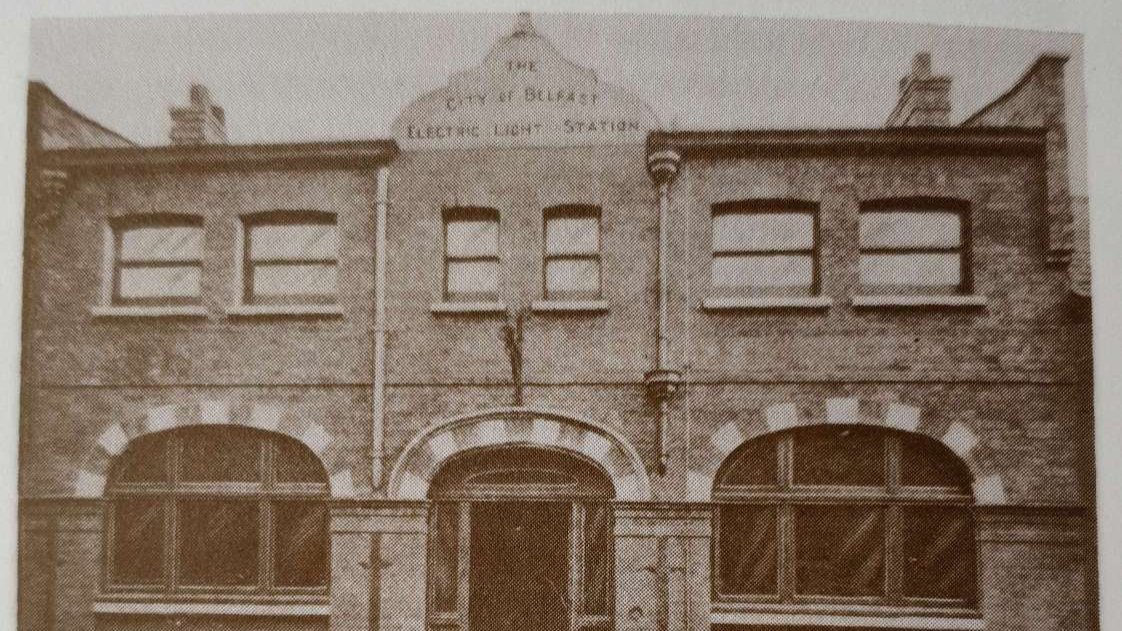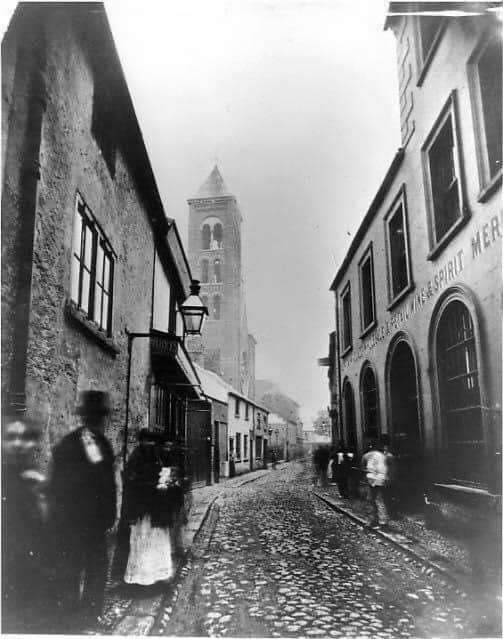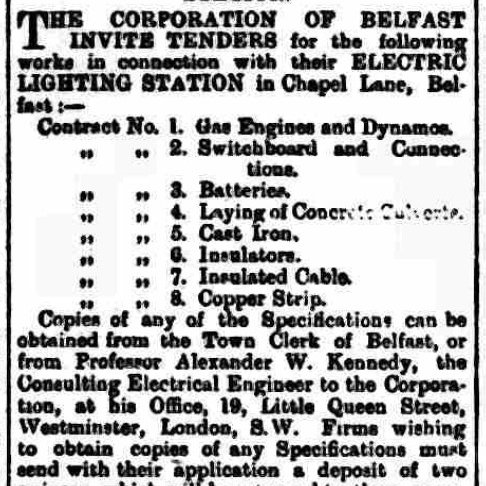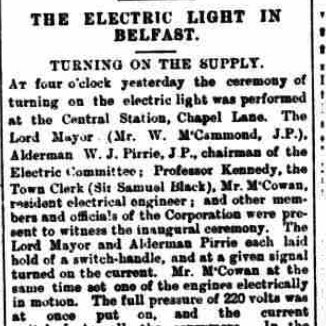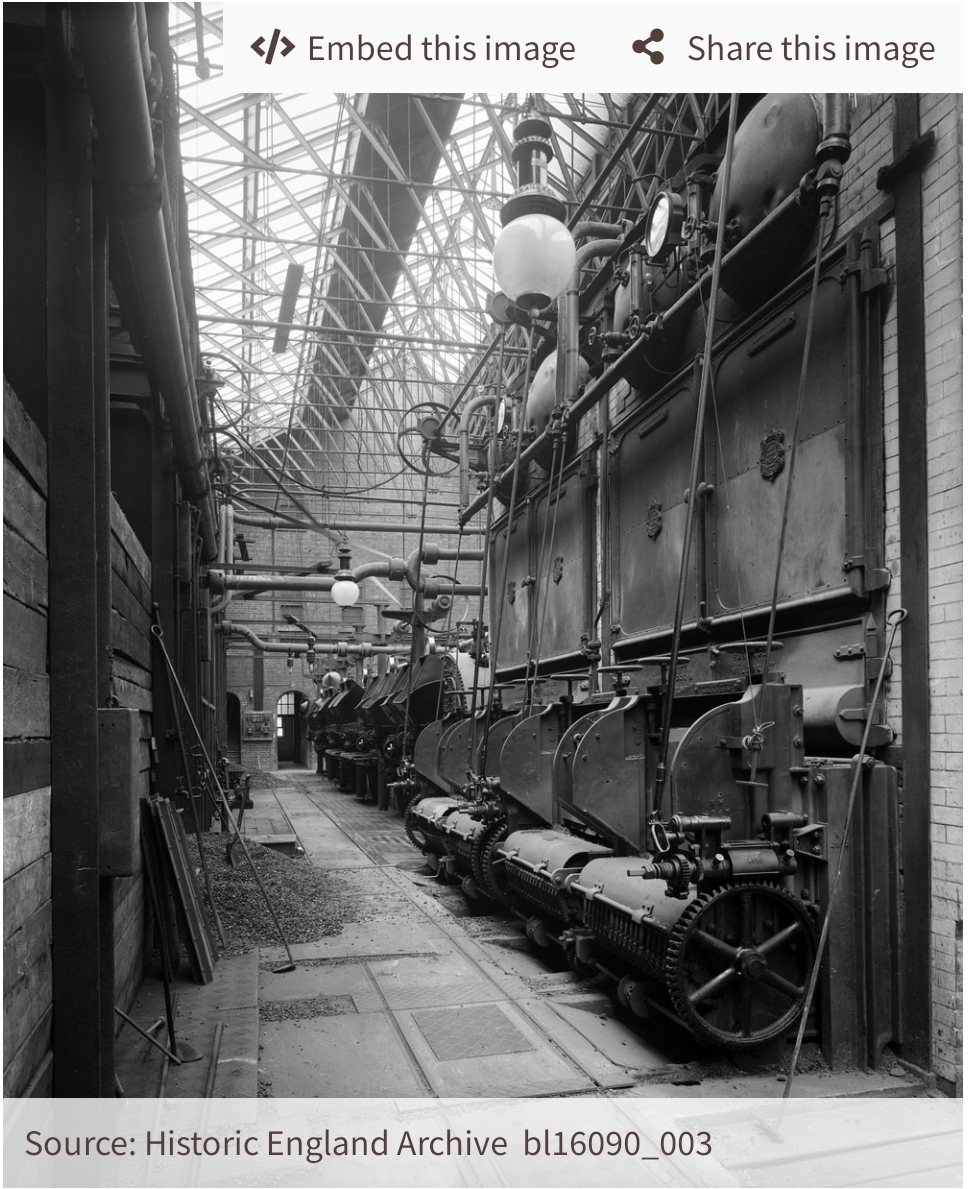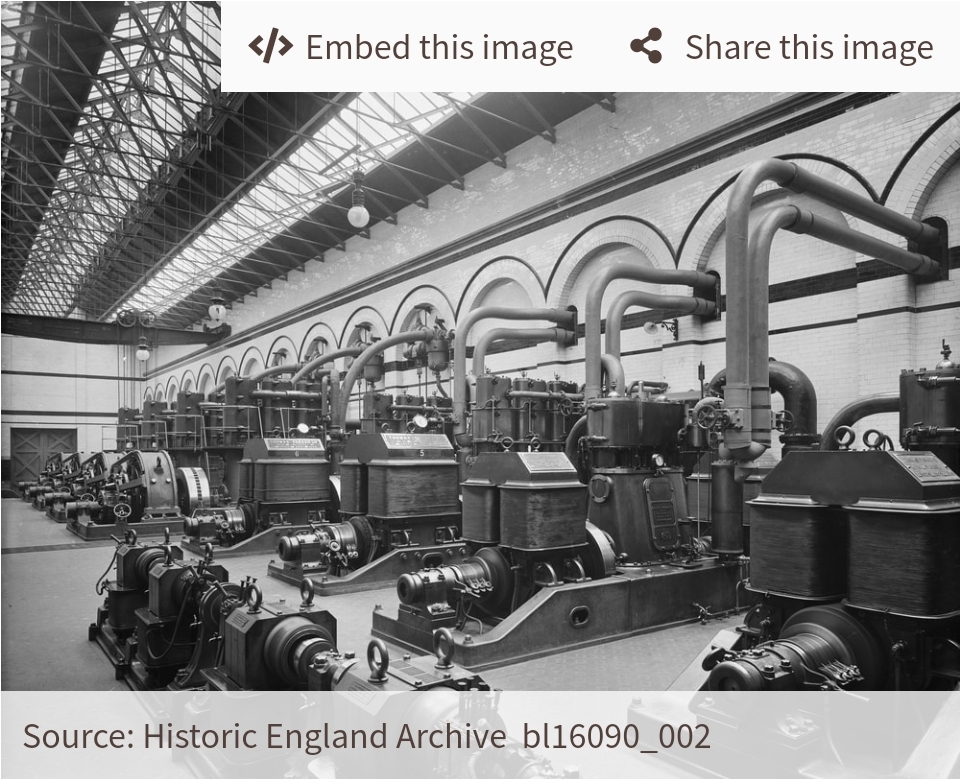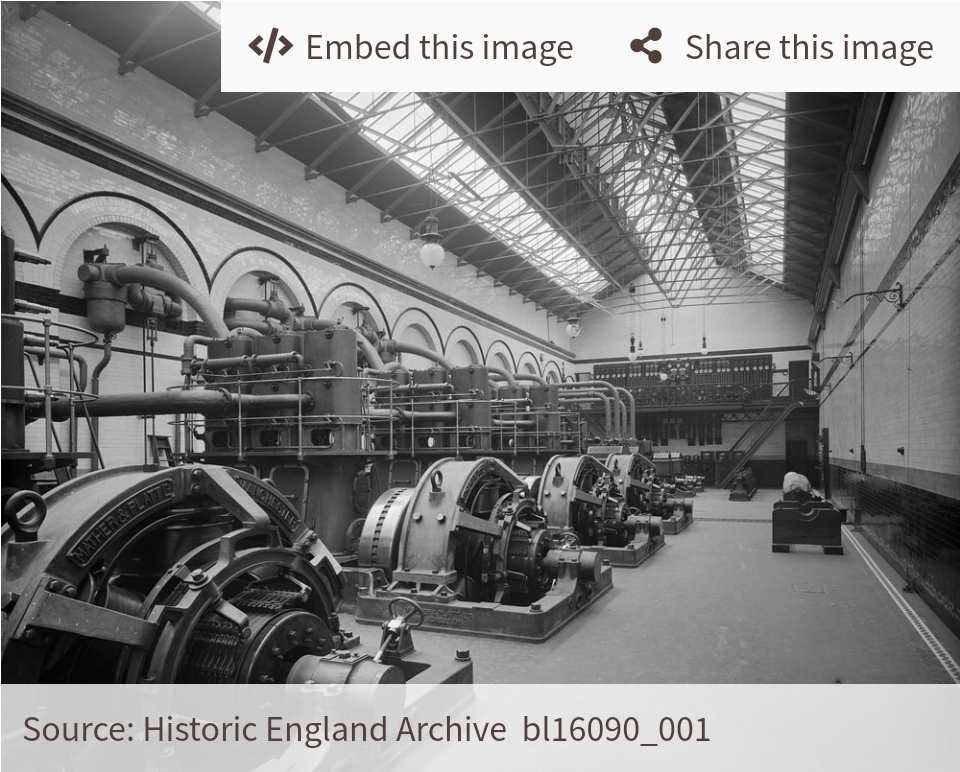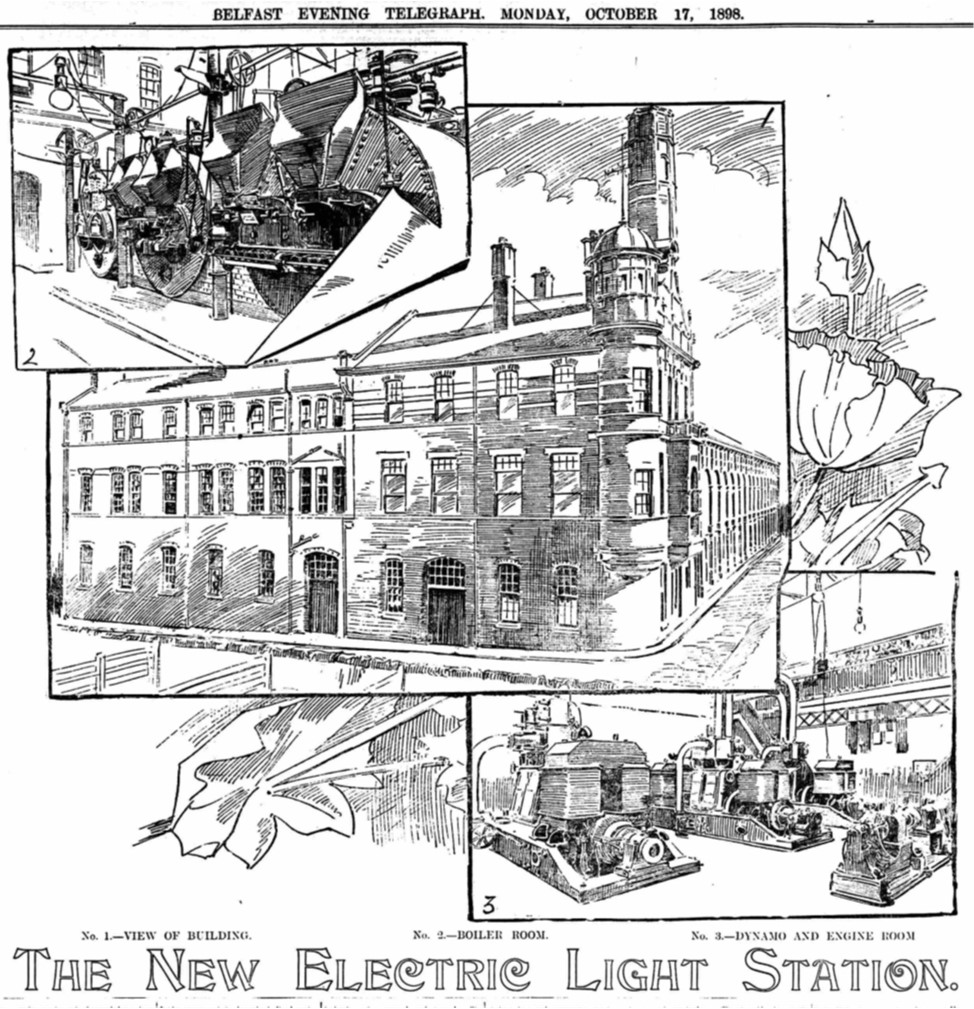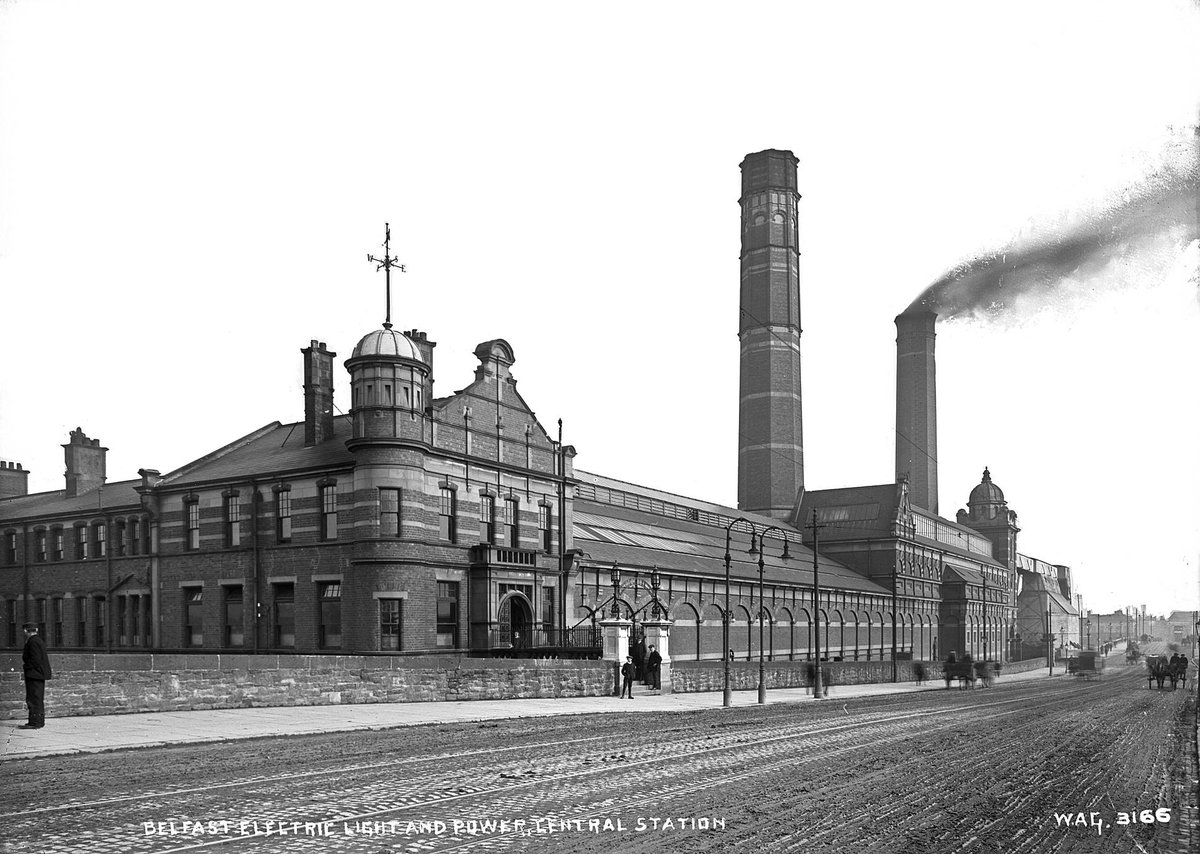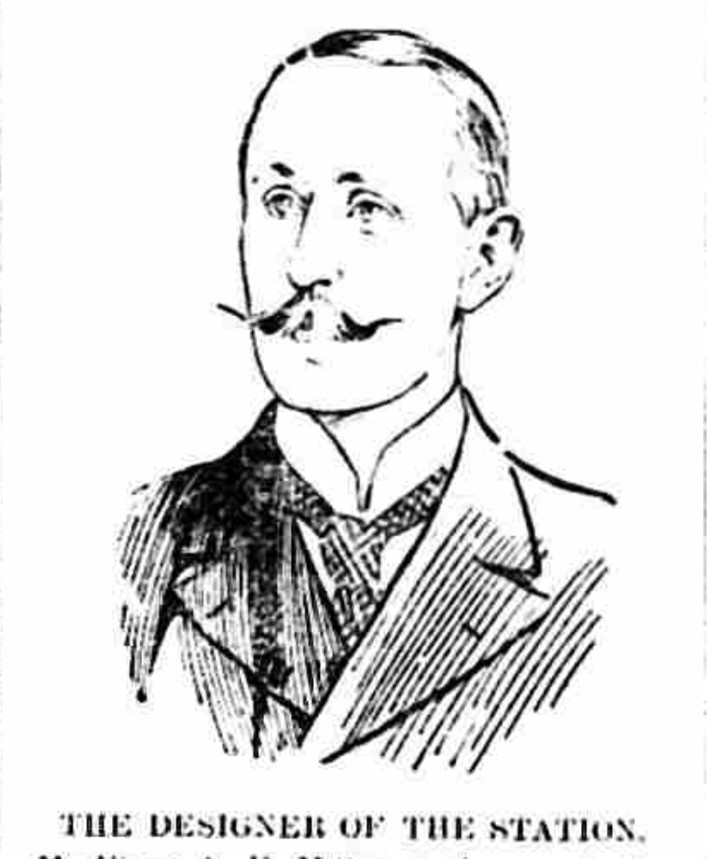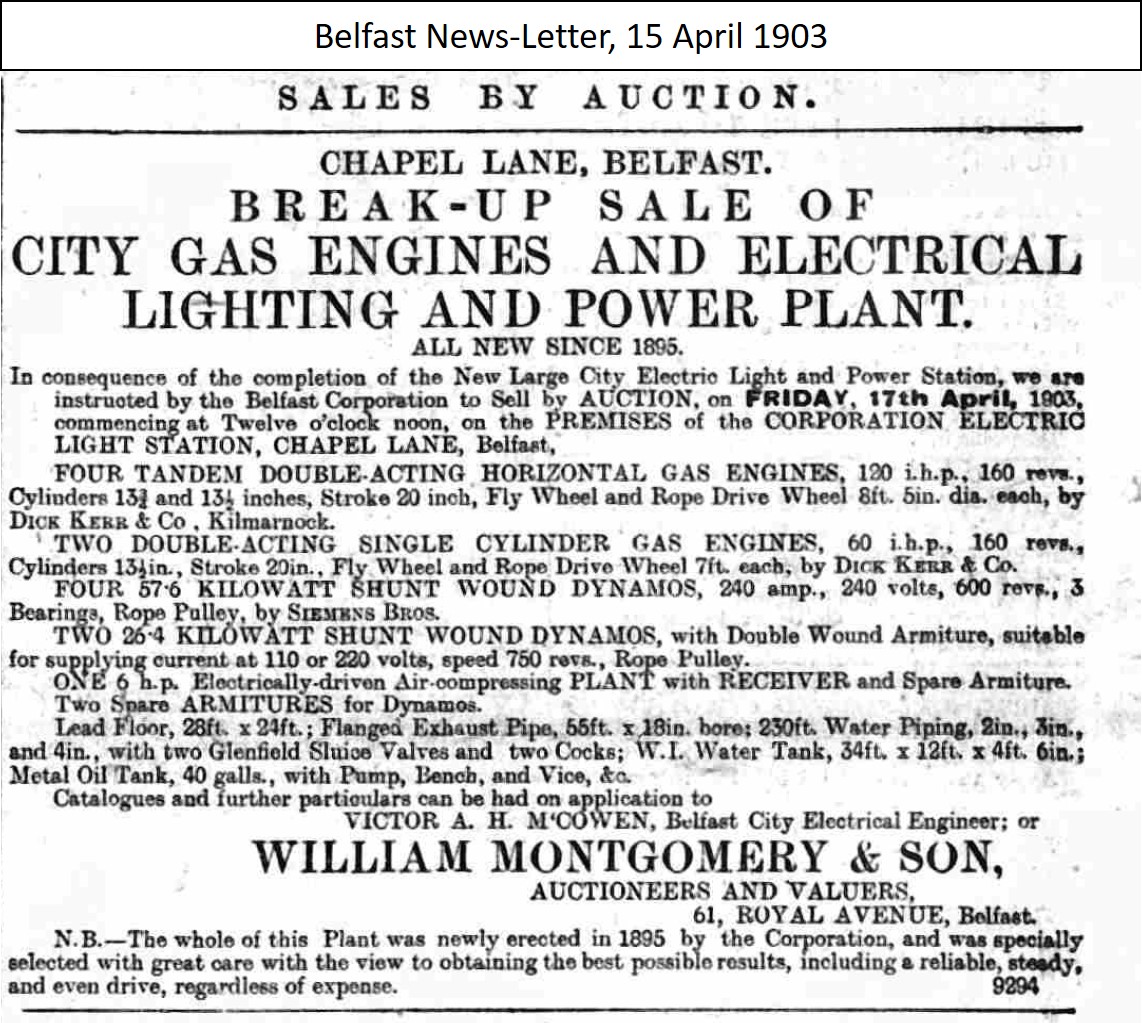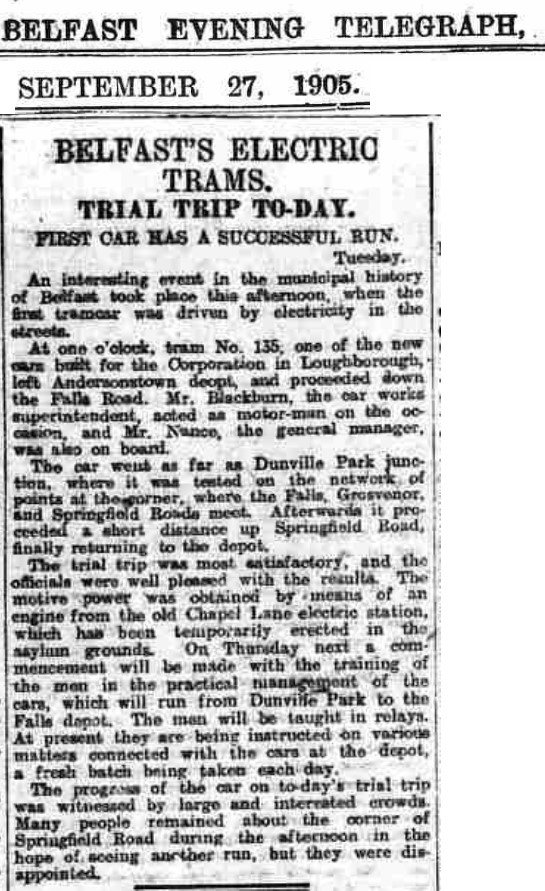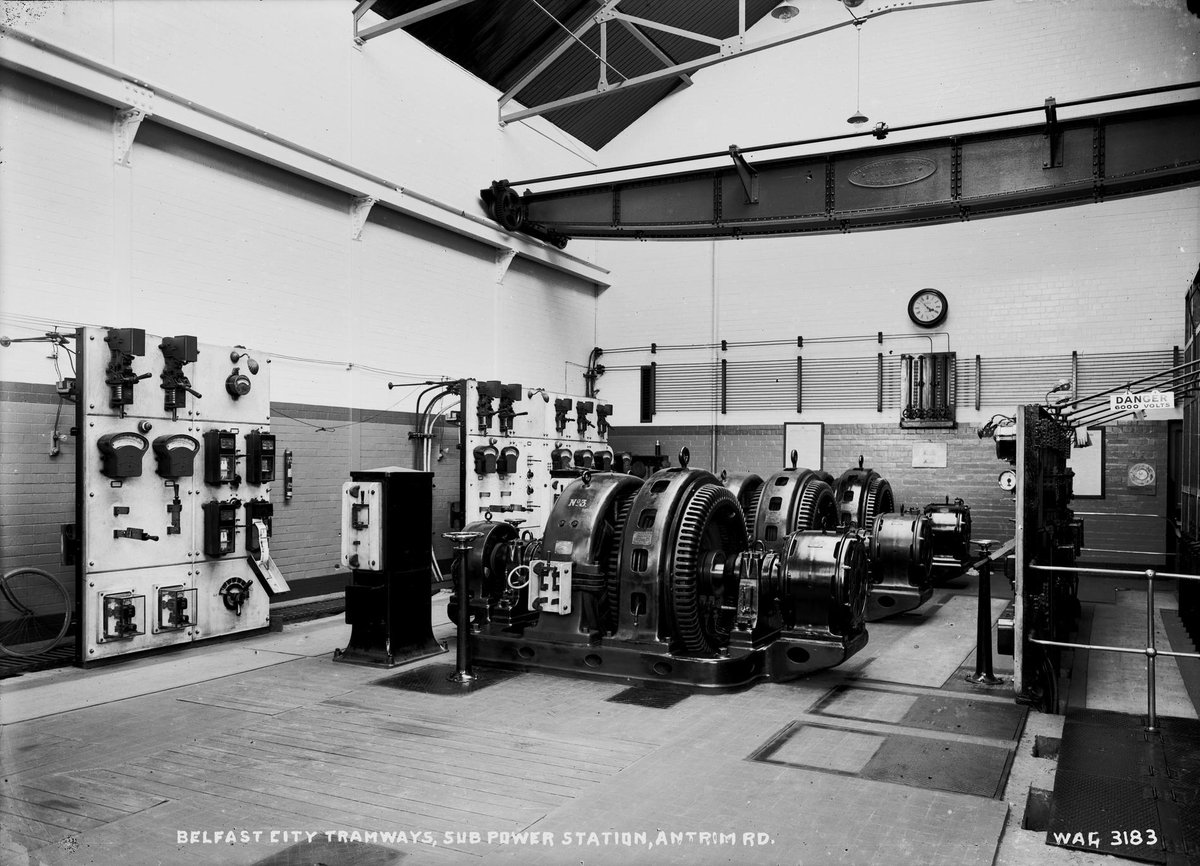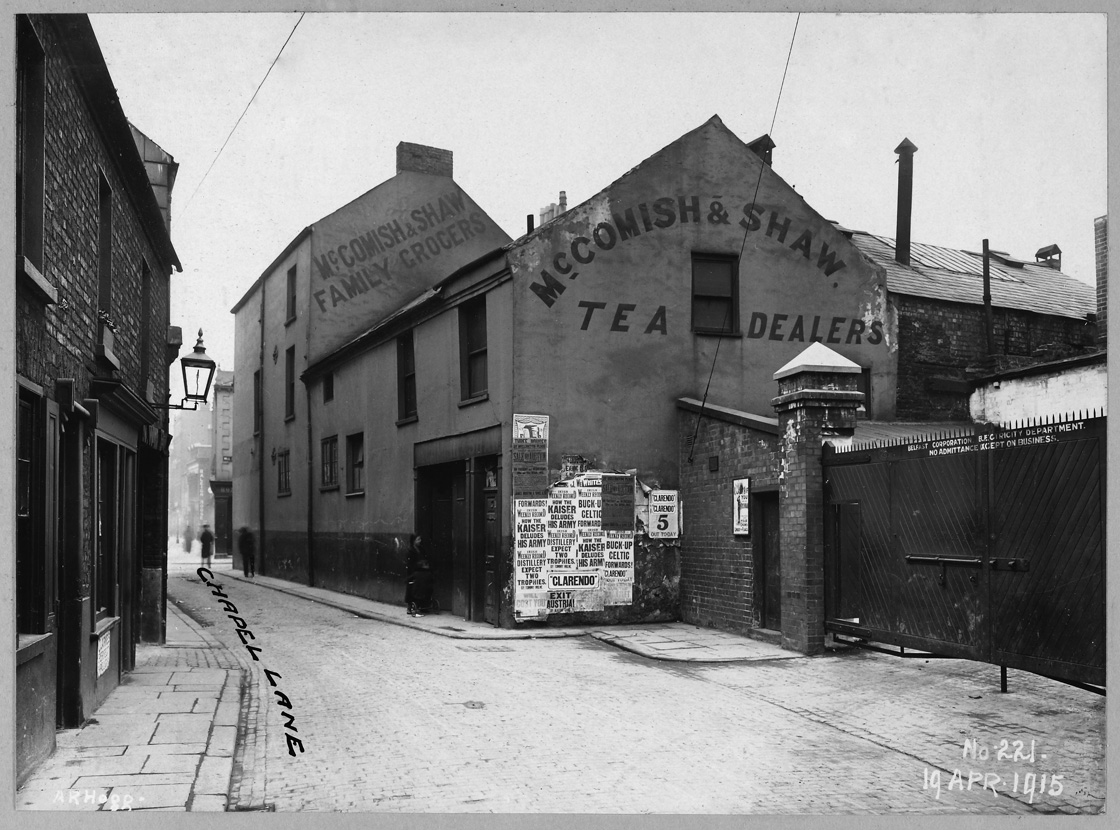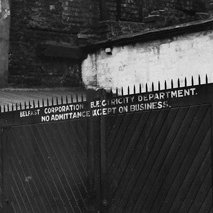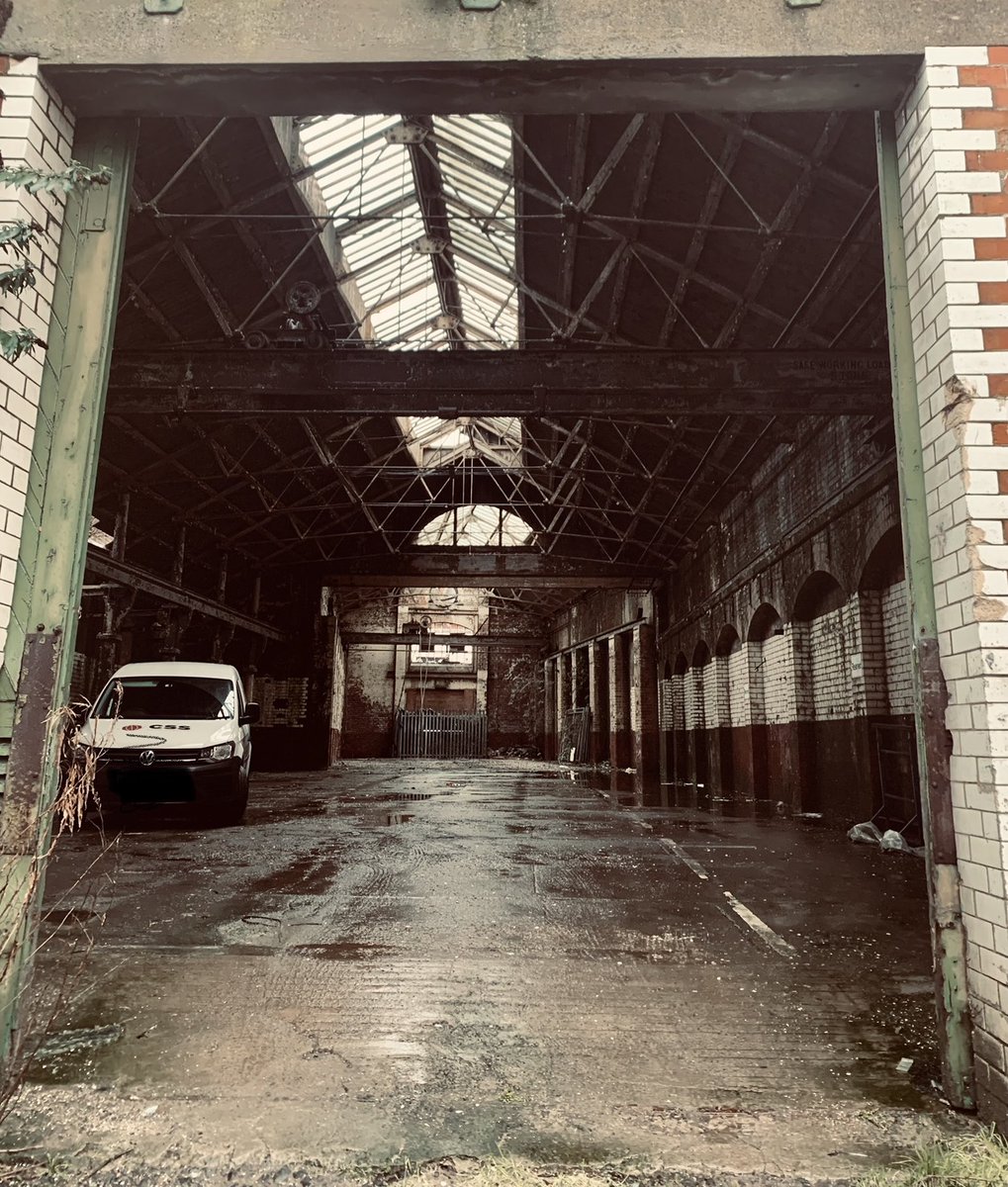A brief history thread of 'The City of Belfast Electric Light Station': Belfast's first electric power station, on Chapel Lane. /1
In November 1892, Belfast Corporation decided to introduce an electric light system in the city. Devotees to gas claimed that the greater cost would be inimical to "a community sufficiently Scotch to regard with dismay the unnecessary loss of sixpences", but plans went ahead /2
The site chosen was on Chapel Lane, next door to St Mary's Church. St Mary's was Belfast's first Catholic Church since the 17th century. The photo is from the 1890s, where we can see its unique tower (no longer part of the building) /3
Tenders were advertised by the Corporation in November 1893. The project was overseen by Professor Alexander Kennedy, a London-born Scottish engineer who had designed power stations in Glasgow, Sunderland, Chester and Croydon /4
On 24 January 1895 this "toy experiment" station was opened. The ceremony was attended by the Lord Mayor of Belfast, W.M. McCammond, W.J. Pirrie (as chairman of the Electric Committee; Pirrie was later chairman of Harland and Wolff) and Professor Kennedy himself. /5
In the first 18 months of operation Chapel Lane station provided electricity to shops, theatres, offices, hotels, clubs and churches. The station's forty or so subscribers were clustered around the city centre: Royal Avenue, Corn Market, Victoria Street, North Street, etc. /6
Chapel Lane was mainly an experiment, and it was quickly realised that a new station would be needed to roll out electrification on a larger scale. A new site on East Bridge Street (near Lanyon Place) was chosen /7
The station on East Bridge Street covered over half an acre and was designed by Victor McCowan of Tralee, Co. Kerry who had previously helped with electric lighting in Sydenham (London), the Crystal Palace Exhibition of 1892, and electric lighting in Bray, Co. Wicklow /8
Chapel Lane station continued operations until 1903, when the machines were sold off at auction. They were later used to establish Belfast's electric tram network in 1905. /9
The site was still owned by Belfast Corporation in 1915, when Alexander Hogg photographed Chapel Lane, but it is uncertain what happened to the site during the rest of the 20th century. /10
This is the site today (credit @maevemonaghan): one can still see the original trusses and some of the industrial architecture. Kept behind rolled shutters, it is a rare sight. What will be the future of Belfast's first electric power station? /end

 Read on Twitter
Read on Twitter